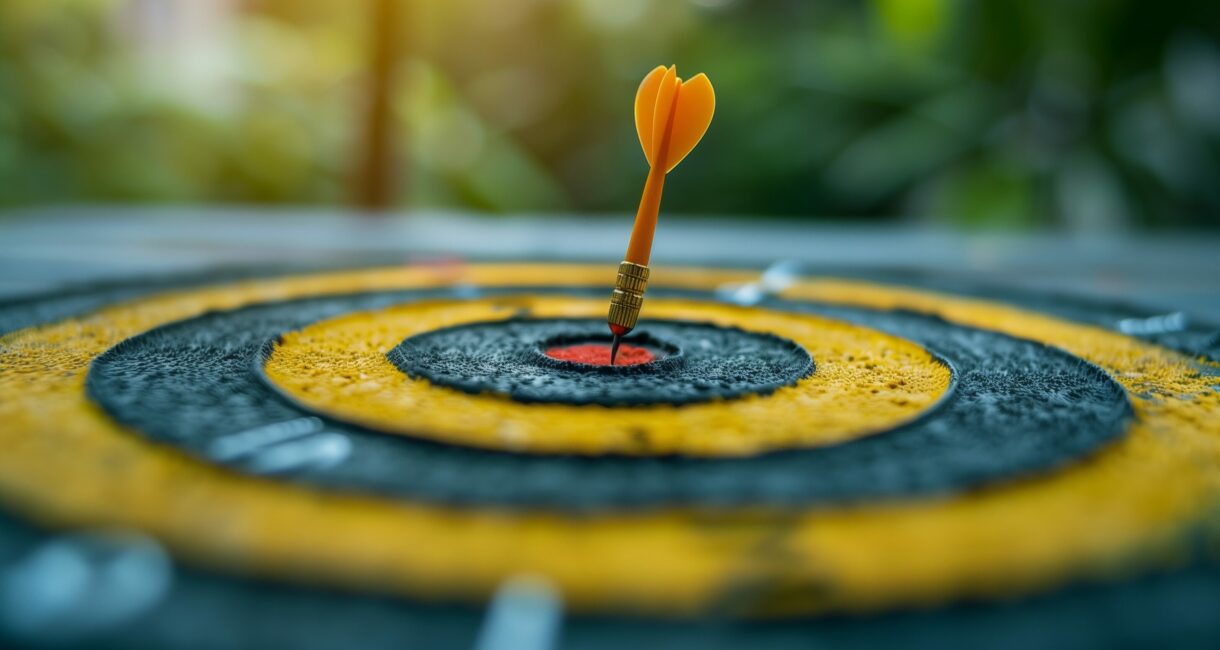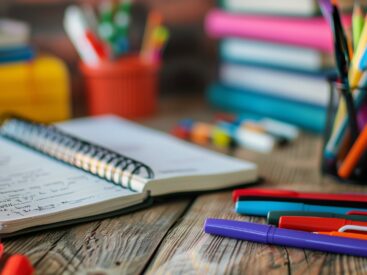Imagine it’s a crisp Monday morning, and you’re standing in front of your classroom, ready to inspire young minds. But do you have a clear plan for the day? Many teachers say no. That’s where daily goal setting comes in, making your teaching journey focused and successful.
As a teacher, you handle many tasks. You plan lessons, grade papers, manage the classroom, and work on your own growth. Daily goal setting can help you handle all these tasks smoothly.

Goal setting is more than just checking off tasks. It’s about having a clear vision for your classroom and career. It turns big goals into smaller, achievable steps. Daily goals help you focus on what you want to achieve, like improving literacy or finding joy in teaching.
But how do you write effective goals? That’s where SMART goal-setting comes in. By making your goals Specific, Measurable, Achievable, Relevant, and Time-bound, you set yourself up for success. This method works for teachers at all levels.
Are you ready to change your teaching practice? Let’s explore daily goal setting for teachers. We’ll see how setting smart goals can improve your writing instruction, reading, classroom management, and student engagement.
Key Takeaways
- Daily goal setting enhances teacher productivity and student success
- SMART goals provide a structured approach to achieving teaching objectives
- Writing specific, measurable goals helps track progress effectively
- Goal setting can address various areas including literacy, classroom management, and student engagement
- Regular goal setting contributes to continuous professional development
Understanding the Importance of Daily Goal Setting for Teachers
Daily goal setting for teachers can change your classroom for the better. By setting specific goals each day, you improve your teaching and help students succeed. Goal setting for teachers is more than planning. It’s a way to keep improving.
Benefits of Setting Daily Goals
Setting daily goals keeps you organized and focused. It helps you sort tasks and use your time well. With smart goals, you’re more likely to:
- Improve classroom management
- Teach in a way that meets different students’ needs
- Keep track of how students are doing
- Change your teaching methods quickly
Impact on Teacher Productivity and Student Success
Studies show that setting goals can really help students learn better. Robert Marzano found that good goal setting can lead to a 18 to 41 percent increase in learning. Clear goals give you and your students a plan to follow.
| Goal Setting Element | Impact on Students |
|---|---|
| Building competence | Increases confidence |
| Promoting autonomy | Enhances self-direction |
| Cultivating interest | Boosts engagement |
| Altering perceptions | Improves self-efficacy |
Overcoming Common Challenges in Goal Setting
Setting goals is important, but it can be tough. Time and setting goals that are too big can slow you down. To get past these problems:
- Focus on specific, achievable goals
- Make setting goals a part of your daily life
- Use a prompt or newsletter to remember your goals
- Break big goals into smaller tasks
Remember, setting goals is a continuous process. By always setting and checking your goals, you’ll make your classroom more dynamic and productive for your students.
The SMART Approach to Goal Setting for Educators
As the school year ends, teachers should reflect and plan for next year. The SMART approach helps educators set goals that lead to success. These goals are Specific, Measurable, Achievable, Relevant, and Time-bound.
This framework lets you make clear goals that match your professional growth and student needs. Here are some examples of SMART goals for teachers:
- Strengthen your Professional Learning Network (PLN) by participating in two Twitter chats monthly, following one new educational blog each month, and engaging in one book study per semester.
- Increase the number of project-based learning activities by implementing one at the end of each unit, dedicating 20 minutes of class time daily to its development.
- Improve 6th-grade math proficiency by helping 80% of students achieve proficient levels on assessments by the end of the school year.
To succeed with your goals, make a detailed action plan. This keeps your goals from getting lost in daily tasks. Make sure your goals match your school’s plans and teaching frameworks.
| Goal Component | Example |
|---|---|
| Specific | Implement project-based learning at the end of each unit |
| Measurable | Dedicate 20 minutes of class time daily |
| Achievable | Develop a rubric with students |
| Relevant | Aligns with school’s goal of promoting student engagement |
| Time-bound | Complete by the end of each unit throughout the school year |
Using the SMART approach, you’ll set goals that are more likely to succeed. Share your goals with colleagues for support and accountability. This way, you’ll improve your teaching and help your students do better.
Writing Daily Goal Setting for Teachers: A Step-by-Step Guide
Setting teaching goals is key for your growth and your students’ success. This guide will show you how to set realistic goals for the next school year and beyond.
Identifying Key Areas for Improvement
First, identify what you need to improve in your teaching. Think about how you can help your students more, manage your classroom better, or grow personally. Use tests to see where you are now and set goals for improvement.
Crafting Specific and Measurable Objectives
Make your goals clear and measurable. For instance, “Boost student interest in math by 20% with new teaching methods.” This way, you can easily see if you’re making progress.
Setting Realistic Timeframes
Give your goals realistic deadlines. Think about the school year and what you have. Break big goals into smaller tasks for the whole year.
Aligning Goals with Curriculum and Student Needs
Make sure your goals fit the curriculum and what your students need. This makes your goals more effective and meaningful for education.
| Goal Type | Example | Timeframe |
|---|---|---|
| Student Performance | Improve reading comprehension scores by 15% | By end of semester |
| Professional Development | Attend 3 workshops on innovative teaching techniques | Throughout school year |
| Classroom Management | Reduce disruptive behavior incidents by 30% | Within first quarter |
Writing down your goals makes you more likely to achieve them. Start now and see your teaching career grow!
Incorporating Goal Setting into Your Daily Routine

Begin your day with a clear plan by reviewing and setting goals. Use a smart goals template to make it easier and keep you consistent. This helps you focus on important areas like improving student understanding and teaching strategies.
Here are steps to make goal setting a daily habit:
- Set aside 10 minutes each morning for goal review
- Use a planner or digital app to track progress
- Incorporate mindfulness practices to enhance focus
- Regularly assess goals based on student feedback
Effective goal setting is all about balance. While planning for next semester is key, don’t forget about daily goals. A study showed that writing down goals significantly increases the chance of success.
Try using W.O.W. (Within One Week) goals with your students. This method helps them set personal, reachable goals. Regular check-ins and journaling about these goals can increase student engagement and motivation.
By linking your daily routine with goal-setting, you’ll make your classroom more focused and productive. This approach helps your professional growth and teaches your students valuable life skills.
Tools and Templates for Effective Goal Writing
As the academic year 2024 comes closer, teachers looking to improve their writing skills and set new goals need the right tools. Let’s look at some great options to make setting goals easier and more effective.
Digital Goal Tracking Apps for Teachers
In today’s digital age, apps can change the game for tracking your goals. They keep you organized and let you easily see your progress. Here are some top picks:
- GoalTracker: Perfect for setting time-bound objectives
- TeacherPlanner: Helps align goals with curriculum needs
- EduGoals: Focuses on professional development targets
Printable Goal Setting Worksheets
If you like a hands-on approach, printable worksheets are a great choice for goal writing. They have sections for:
- Specific goal description
- Measurable outcomes
- Action steps
- Timeline for completion
Collaborative Goal Setting Platforms
Working together on goals can make you more motivated. Collaborative platforms let teachers set and track goals and share progress with peers. This creates a supportive space and helps everyone stay accountable.
| Platform | Key Features | Best For |
|---|---|---|
| EduCollab | Real-time updates, chat function | Department-wide goals |
| TeacherGoals | Progress visualization, peer feedback | Personal development goals |
| SchoolAims | Integration with school systems, data analysis | Aligning individual and institutional goals |
Using these tools and templates can make setting goals easier and boost your success chances. Remember, writing clear goals is key for personal growth and avoiding burnout. Pick the method that suits you best and start setting those S.M.A.R.T goals now!
Balancing Short-Term and Long-Term Teaching Goals
Teachers have to balance today’s classroom needs with their future goals. It’s important to manage short-term and long-term goals well. Short-term goals might be using a new rubric for grading, while long-term goals could be improving special education.
- Integrate professional development into curriculum planning
- Set SMART goals for both immediate and future objectives
- Regularly evaluate and adjust your goals
- Align personal goals with your school’s vision
Adding social-emotional learning (SEL) to your goals helps students and grows your skills. For instance, a short-term goal could be to start a new SEL strategy in class. A long-term goal might be to create a full SEL curriculum for your level.
By balancing short-term and long-term goals, you boost your teaching skills and student results. This way, you meet today’s needs and aim for your career goals.
Measuring Progress and Adjusting Goals
Tracking how students do is crucial for good teaching. Using formative assessments lets you see if your students meet their goals. This way, you can change your lesson plans to help students reach their targets.
Using Formative Assessments
Formative assessments are great for checking if students meet their goals. They show what students understand and what they need help with. For example, quick writing or group talks in ELA classes can show how well students get the material.
By measuring IEP goals well, you help all students, including those with special needs.
Reflecting on Outcomes
Regularly think about how well your goals are working out. Look at student data and what you see in class. This helps you see where students are doing great and where they need more help.
About 40% of learning comes from thinking about how we learn. So, teach students to think about their own learning too.
Adapting Based on Feedback
What students say about learning is key to changing goals. Listen to them to know what they need. If most students struggle to talk in certain situations, change your goals to help them.
Use visual displays of progress to motivate students and guide future goals.
| Goal Type | Review Frequency | Adaptation Method |
|---|---|---|
| Short-term | Weekly | Break into manageable tasks |
| Long-term | Monthly | Adjust based on short-term progress |
| IEP Goals | Quarterly | Collaborate with support team |
By always checking progress and changing goals, you make learning exciting. This helps students think better and take charge of their learning. Remember, setting and checking goals well boosts motivation and grades.
Inspiring Goal Setting Examples from Successful Educators

Successful teachers understand the importance of setting clear goals. These goals help them improve their teaching and get students more involved. Let’s look at some examples of how teachers set goals to achieve their targets in the classroom.
One teacher plans to use at least three new ways to teach different students by the end of the semester. This goal makes lessons fit better with how each student learns, helping them do better. Another teacher wants to get 20% more students at grade-level reading by the end of the year. This is key for doing well in all subjects.
Here are more examples of effective goal setting:
- Boost average student performance on standardized English tests by 15% this year
- Ensure 90% of students pass end-of-course science exams by May
- Improve class average scores on history projects by 10% in the second semester
- Reduce classroom disruptions by 30% by the end of the second quarter
These goals show how teachers can set clear, measurable targets. By doing this, they can improve their teaching and help students do better. Setting clear goals helps teachers track progress and make real changes in their classrooms.
Integrating Professional Development into Your Goal Setting Practice
Professional development is crucial for your growth as an educator. Setting smart goals helps you improve your skills and support your students’ success. Let’s look at how to mix professional growth with your teaching goals.
Begin by pinpointing areas you’d like to enhance. Perhaps you aim to refine your social studies teaching or increase student participation. Set a goal to finish at least 10 hours of focused training by year’s end.
Here’s a straightforward method to organize your professional development goals:
- Identify a skill to enhance
- Set a measurable aim
- Find suitable courses or workshops
- Establish a realistic deadline
- Monitor your advancement regularly
Your growth positively impacts your students. As you acquire new strategies, consider setting goals for applying them in class. This strategy connects your professional development with your students’ success.
By weaving professional development into your goal-setting, you’re not just boosting your skills. You’re also crafting a more vibrant and effective learning space for your students.
Empowering Teacher Success Through Daily Goal Setting
Teachers with 40 years of experience in Arizona, North Carolina, and Virginia say daily goal setting changes the game. Instead of trying to do everything at once, take time to think about what’s most important. Using a notebook or digital tool helps you focus and track your progress.
SMART goals are excellent for teachers wanting to improve. For instance, “By Nov. 30, my students will prepare for and participate in a 15-minute class discussion without interrupting each other or being off task”. This method makes goals specific, measurable, attainable, relevant, and timely.
Adding a mindfulness practice to your day can boost focus and lower stress as you aim for your goals. Goal setting isn’t just for you; it’s a key tool for your students’ success, too. By giving students data on their strengths and areas to improve, you help them set goals for better grades. Tools like Progress Learning make tracking progress fun for K-12 students, making learning more engaging and effective.
FAQ
Why is goal setting important for teachers?
Goal setting is key for teachers at all levels. It helps them focus on what’s important, manage their time well, and keep their classrooms in order. It also helps with managing resources and boosts productivity. Clear goals lead to more engaged students and better grades.
What is the SMART approach to goal setting?
The SMART method makes sure goals are Specific, Measurable, Achievable, Relevant, and Time-bound. This way, teachers can set clear, doable goals that match their growth and what their students need.
How can I write effective daily goals?
To write good daily goals, pick areas you want to improve, set clear and measurable targets, and choose realistic deadlines. Make sure your goals fit the curriculum and what your students need. Start each day by setting your goals and use tools like planners or apps to keep track.
What tools and templates can help with goal setting?
Use apps for tracking goals, worksheets you can print, and platforms for setting goals with others. These tools make setting goals easier and keep you consistent all year.
How can I balance short-term and long-term teaching goals?
Balance short-term goals like trying a new classroom strategy with long-term goals like boosting student performance. Think about your own growth and what’s best for your students. Include goals for special education and social-emotional learning (SEL) too.
How can I measure progress and adjust goals?
Use tests and observations to check how you’re doing towards your goals. Think about what your students say and how they’re doing. Change your goals if needed to keep them relevant and reachable.
Can you provide examples of successful goal setting from educators?
Successful goals include “Use at least three new ways to teach differently by semester’s end” or “Get students more involved in group work by 25% with new learning methods.” These show how clear goals can make teaching better and help students do better too.
How can I integrate professional development into my goal setting practice?
Add goals for professional growth to your planning, like “Do 10 hours of learning new teaching methods by year’s end.” Make sure your growth goals match your classroom goals for a complete approach to getting better.
What are the benefits of daily goal setting for teachers?
Daily goal setting lets teachers take charge of their growth and classroom success. It helps them keep getting better and shows what to focus on. Using notebooks or digital tools keeps you on track, and mindfulness helps you stay focused and less stressed about reaching your goals.





